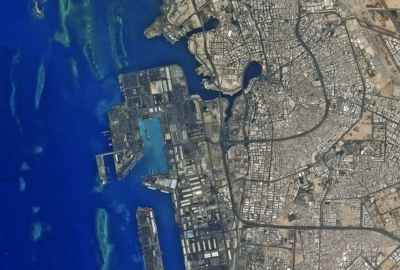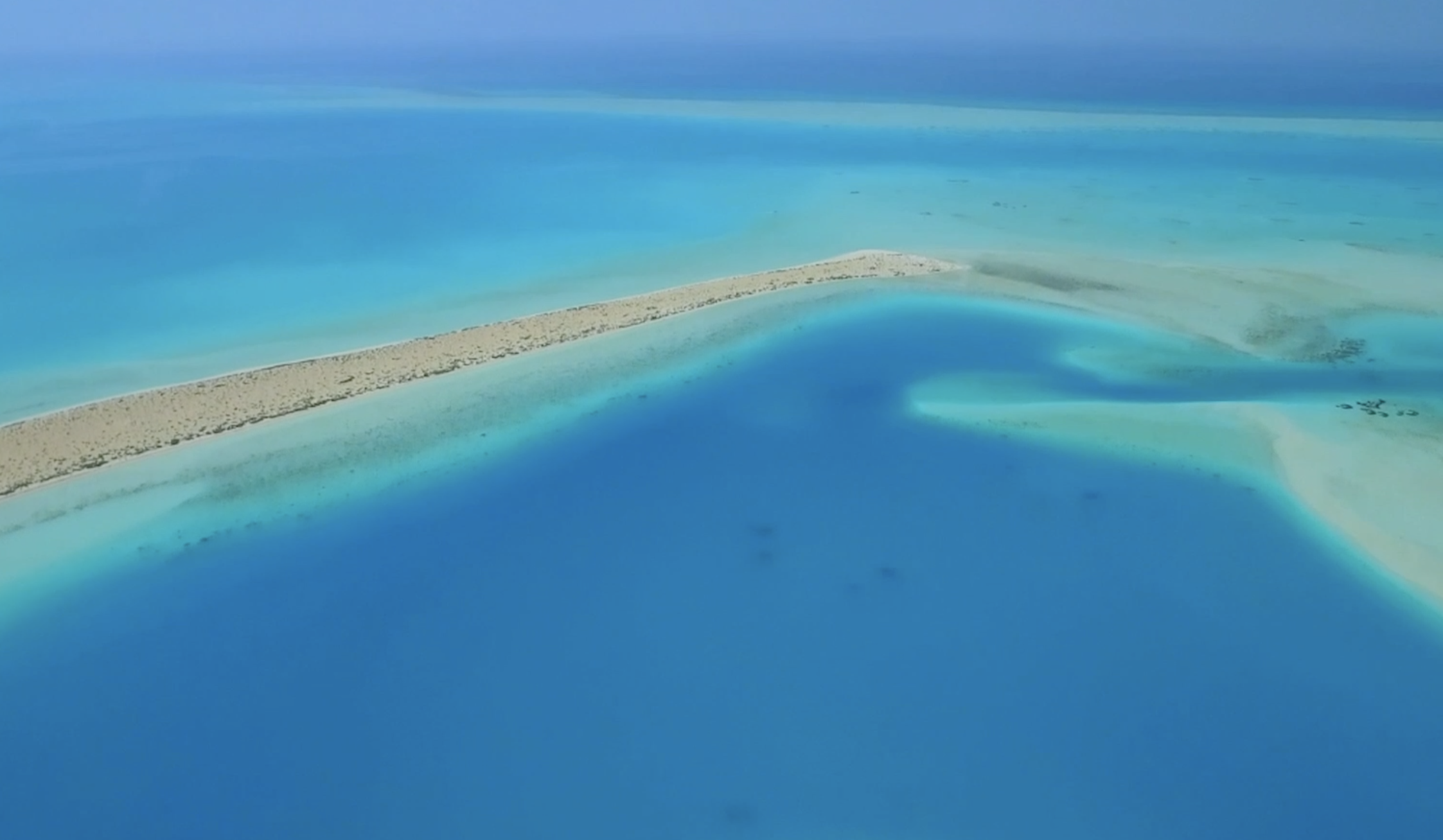Modeling done by Saudi Arabia’s King Abdullah University for Science and Technology (KAUST) reveals the important role of offshore reefs in the Red Sea in protecting the Kingdom’s coastal zones and highlights the need to conserve the region’s coral reefs.
KAUST studied the prediction of storm surges and peak wave heights in the Red Sea using advanced high-resolution modeling, revealing just how essential Saudi Arabia’s offshore reefs are in protecting coastal zones.

Reefs shown on the left protecting Jeddah’s port. Photo taken by the NASA Earth Observatory.
The findings by KAUST researchers “provide valuable design criteria for city planning in the King Abdullah Economic City (KAEC) coastal zone and highlight the economic and disaster-mitigating imperative to conserve the Red Sea’s coral reefs,” according to a post by KAUST in phys.org.
“The original task was to model the maximum wave heights to set the minimum safe floor elevation for structures and roadway design in the city,” says Sabique Langodan from KAUST’s Red Sea Modeling and Prediction Group. “Yet with the wealth of wave and water-level observations and accurate bathymetry (water depth) near the coastline, combined with the advanced modeling and supercomputing capabilities available to us at KAUST, we extended the study to investigate the role of coral reefs in modulating the wave climate of this reef-sheltered region.”
“We configured a high-resolution model using an unstructured grid, which allows us to vary the resolution of the model over the domain, from 60 kilometer cells out to sea, to cells as small as 60 meters near the coastline,” says Langodan, per the post on phys.org.
The results of the study will have a real impact on planners — and could bring an estimated savings of $500 million.
“Our high-resolution study allowed the minimum safe elevation in KAEC to be revised lower, from 4.0 meters to 2.3 meters,” says group leader Ibrahim Hoteit. “Although a relatively small drop, this leads to a saving of about 90 million cubic meters of fill material equating to about 500 million USD.”
[Click here to read the full post on phys.org] [Click here to read the full study and paper from KAUST]









